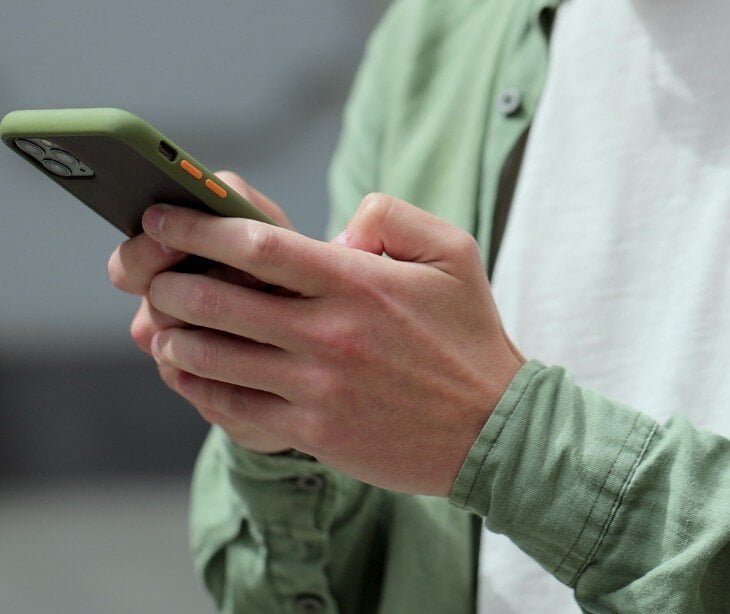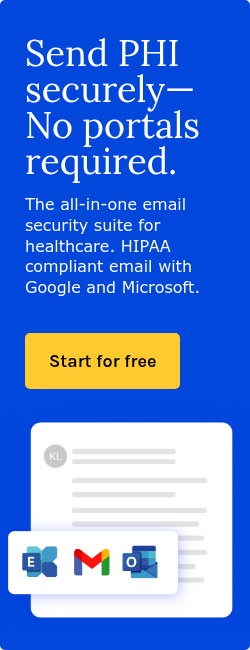
Addiction recovery programs rely on consistent communication, patient engagement, and timely support to improve treatment outcomes. However, individuals in recovery often face barriers such as stigma, lack of access to care, and difficulties in maintaining adherence to treatment plans. Secure digital communication, particularly HIPAA compliant text messaging, has emerged as a valuable tool in addressing these challenges by offering real-time support, relapse prevention strategies, and enhanced care coordination. HIPAA compliant text messaging ensures that personal health information remains confidential while allowing recovery specialists, therapists, and medical providers to maintain ongoing contact with patients.
Understanding addiction and recovery programs
According to the Mayo Clinic, diagnosing drug addiction, or substance use disorder, involves a “thorough evaluation” that typically includes an assessment by “a psychiatrist, a psychologist, or a licensed alcohol and drug counselor.” Although lab tests like blood or urine screenings may be used to detect recent drug use, “they’re not a diagnostic test for addiction” but rather serve as tools to “monitor treatment and recovery.” Most mental health professionals rely on the Diagnostic and Statistical Manual of Mental Disorders (DSM-5), published by the American Psychiatric Association, to formally diagnose the condition. While there is no known cure for drug addiction, treatment options can help individuals “overcome an addiction and stay drug-free.” The approach to treatment is personalized, depending on “the drug used and any related medical or mental health disorders,” and long-term follow-up is “important to prevent relapse.” Treatment programs often include individual, group, or family therapy, and place a strong focus on “understanding the nature of addiction, becoming drug-free, and preventing relapse.” Depending on the severity, care may be provided through outpatient, residential, or inpatient programs. Detoxification, or withdrawal therapy, aims “to enable you to stop taking the addicting drug as quickly and safely as possible,” and may involve tapering off the drug or using substitution medications like methadone or buprenorphine. In the case of opioid overdose, “a medicine called naloxone” can be administered to reverse the drug’s effects. However, Mayo Clinic states that “immediate medical care” should follow any use of naloxone. Medication-assisted treatment may also play a role in recovery. At the same time, these medicines “don’t cure your opioid addiction,” they can “reduce your craving for opioids and may help you avoid relapse.” Behavioral therapy, which can be done individually or with family and groups, is central to many treatment plans and helps individuals “develop ways to cope with your drug cravings,” avoid triggers, and deal with issues such as employment, relationships, and co-occurring mental health conditions. Additionally, self-help support groups like Narcotics Anonymous reinforce the message that addiction is “an ongoing disorder with a danger of relapse,” and offer a community that helps reduce the shame and isolation that often accompany addiction. Even after initial treatment is complete, Mayo Clinic encourages the need for “ongoing treatment and support” to maintain sobriety, through regular counseling, group sessions, or participation in recovery communities.
HIPAA and substance use disorder
Substance Use Disorder (SUD) is a major public health concern, and ensuring patient privacy and data confidentiality is of the highest priority in the healthcare industry.
HHS Secretary Xavier Becerra stated, “Patient confidentiality is one of the bedrock principles in health care. People who are struggling with substance use disorders must have the same ability to keep their information private as anyone else. This new rule helps to ensure that happens by strengthening confidentiality protections and improving behavioral health integration with other medical records.”
To address this, the US Department of Health and Human Services (HHS) and The Substance Abuse and Mental Health Services Administration (SAMHSA) collaborated to create the HIPAA Drug and Alcohol Records Law, also known as 42 CFR Part 2. The legislation outlines guidelines for handling patient consent and the sharing of SUD-related PHI.
Recently, HHS and the Substance Abuse and Mental Health Services Administration (SAMHSA) finalized modifications for confidentiality regulations regarding patients with substance use conditions (SUDs). The new provisions specifically increase coordination among providers, strengthen confidentiality through civil enforcement, and try to integrate behavioral health information with other medical records for better patient outcomes.
The ruling is a positive step for patients and could show how the public is increasingly aware of their data being transferred without consent. The ruling should help make sure those seeking treatment for substance use are provided a layer of protection.
Read also: HIPAA and substance abuse patients PHI
The importance of communication in addiction recovery
Successful addiction recovery necessitates continuous support and structured interventions. Regular follow-ups and active engagement from healthcare providers have been shown to significantly enhance recovery outcomes. For instance, Project ESQYIR (Educating and Supporting Inquisitive Youth in Recovery), a 12-week mobile-based aftercare pilot program, demonstrated that participants were significantly less likely to relapse compared to those receiving standard aftercare. Specifically, youth in the texting intervention were less likely to relapse to their primary substance use over time and reported decreased substance use problem severity.
Furthermore, digital interventions, including secure messaging and telehealth, have become critical components of modern addiction treatment. These tools provide a bridge between in-person counseling sessions and real-world challenges, ensuring that patients can receive guidance when they need it most. For example, the Substance Use Treatment and Recovery Team (START) study is evaluating the effectiveness of a consultative team in increasing initiation of medication for opioid use disorder and linkage to treatment after discharge, highlighting the potential of integrated digital interventions in addiction recovery.
While text messaging offers an effective means of engagement, traditional SMS is not secure for transmitting protected health information (PHI). Implementing HIPAA compliant messaging platforms addresses this concern by enabling secure, confidential communication between patients and healthcare providers, ensuring that sensitive addiction treatment information remains protected. Secure communication facilitates timely interventions, provides motivational support, and offers immediate crisis assistance, thereby reducing the risk of relapse and enhancing overall treatment adherence.
Advantages of HIPAA compliant text messaging in addiction recovery programs
- Real-time support and crisis intervention: HIPAA compliant text messaging enables healthcare providers to offer immediate assistance during critical moments, potentially preventing relapse. A pilot randomized controlled trial integrating text messaging in a tele-buprenorphine bridge program demonstrated the feasibility of using text messages to provide timely support to individuals with opioid use disorder.
- Enhanced patient engagement and adherence: Regular, personalized messages can remind patients of appointments, reinforce coping strategies, and motivate adherence to treatment plans. The Project ESQYIR study found that youth who participated in the texting intervention were significantly less likely to relapse compared to those in the standard aftercare control condition.
- Confidential and stigma-free communication: Secure text messaging provides a discreet platform for patients to communicate with their healthcare providers, reducing the fear of stigma associated with addiction treatment. Confidentiality encourages more open and honest communication, fostering a stronger therapeutic alliance.
- Cost-effective and scalable support: Implementing text messaging interventions can be more cost-effective than traditional face-to-face interactions, allowing programs to reach a larger number of patients without compromising the quality of support. The adaptability and scalability of text-based interventions make them suitable for diverse populations and settings.
- Personalized interventions: Tailored text messages can address individual patient needs, preferences, and progress, enhancing the relevance and effectiveness of the support provided. A study testing tailored text messaging interventions found that personalized messages could effectively support individuals in reducing alcohol consumption.
Best practices for implementing HIPAA compliant text messaging in addiction recovery
To maximize the benefits of secure messaging in addiction treatment, healthcare organizations should follow these best practices:
- Use secure, HIPAA compliant messaging platforms: Providers should adopt platforms such as Paubox, which offer encrypted, compliant text messaging designed for healthcare communication.
- Obtain patient consent for digital communication: HIPAA requires that patients opt into electronic communication. Providers should clearly explain how secure messaging works, what information will be shared, and how patient privacy is protected.
- Train staff on HIPAA regulations and secure messaging protocols: Counselors, therapists, and support staff must understand the importance of maintaining compliance and how to use secure messaging responsibly.
- Establish clear guidelines for emergency situations: While text messaging can be an effective support tool, patients should be informed about appropriate channels for urgent crises, such as contacting emergency services or a crisis hotline when immediate intervention is needed.
- Monitor and evaluate messaging effectiveness: Recovery programs should regularly assess the impact of secure messaging on patient engagement and relapse prevention, making adjustments as needed to optimize communication strategies.
Case studies highlighting the impact of HIPAA compliant messaging in addiction recovery
- Telehealth and texting intervention to improve HIV care engagement: A Y2TEC study used a secure, encrypted, HIPAA compliant platform called Mosio to send text messages as part of a telehealth intervention aimed at improving HIV care engagement. This approach underscores the feasibility of using secure text messaging to support individuals with substance use disorders.
- Efficacy of short message service text messaging interventions for postoperative pain management: A systematic literature review found that communication via SMS was beneficial in postoperative pain management, improving adherence, acceptance, and satisfaction. Although not specific to addiction recovery, these findings highlight the potential of text messaging interventions in healthcare settings.
Our solution
Addiction recovery is not a straight line. It is a journey filled with challenges, small victories, and moments of vulnerability. Real-time communication can make a meaningful difference. With Paubox, recovery specialists, therapists, and healthcare teams can securely text patients without requiring logins, apps, or portals.
The process of staying drug-free is already demanding. Stigma, complex treatment plans, and emotional strain can make it difficult to reach out for help. Paubox removes those obstacles by making it simple for patients to stay in touch with their care teams in a way that feels safe and familiar. A quick check-in, a message of encouragement, or support during a difficult moment can go a long way.
For many patients, especially those balancing recovery with work and family, texting is the easiest way to stay connected. It is immediate, discreet, and accessible. Paubox ensures those conversations remain private and compliant, allowing providers to maintain trust, follow up more effectively, and offer timely support throughout the recovery process.
See more: Introducing HIPAA compliant texting API by Paubox
FAQs
How can HIPAA compliant texting support long-term recovery beyond the initial treatment phase?
Secure messaging allows providers to maintain ongoing relationships with patients even after formal treatment ends. Follow-up messages can reinforce relapse prevention strategies, offer emotional support, and help patients stay connected to recovery resources.
What role can peer support specialists play in HIPAA compliant text communication?
With proper training and oversight, peer support specialists can use secure texting platforms to check in with patients, share coping tools, and offer encouragement, all while maintaining compliance with privacy regulations.
Can HIPAA compliant texting be integrated with other digital recovery tools or apps?
Yes. Many secure messaging platforms offer integrations with digital health records, patient portals, and recovery-tracking apps, making it easier to deliver personalized, coordinated care.
What safeguards should providers consider when offering text-based support to patients with high relapse risk?
Providers should set clear boundaries around texting hours, create backup plans for emergencies, and guide patients toward crisis resources when needed, ensuring that text messaging is supportive but not the sole form of care.
How can secure texting help address disparities in addiction treatment access?
Text-based communication lowers barriers for individuals in rural or underserved areas who may lack access to frequent in-person care. It provides a discreet, low-tech option that keeps patients engaged regardless of location or socioeconomic status.
Subscribe to Paubox Weekly
Every Friday we'll bring you the most important news from Paubox. Our aim is to make you smarter, faster.




